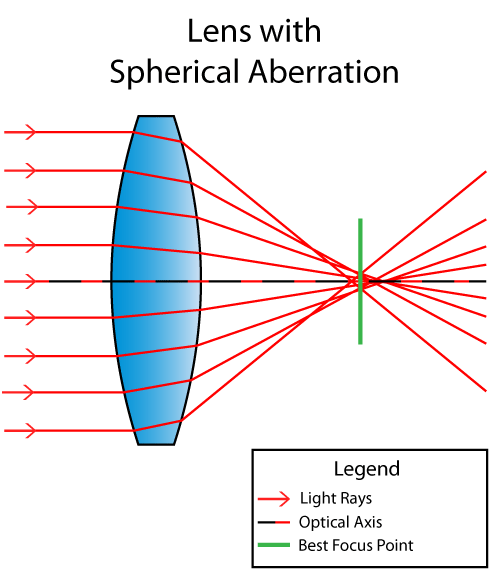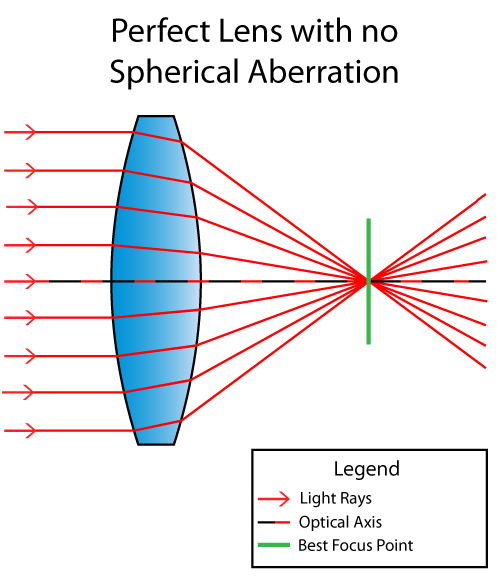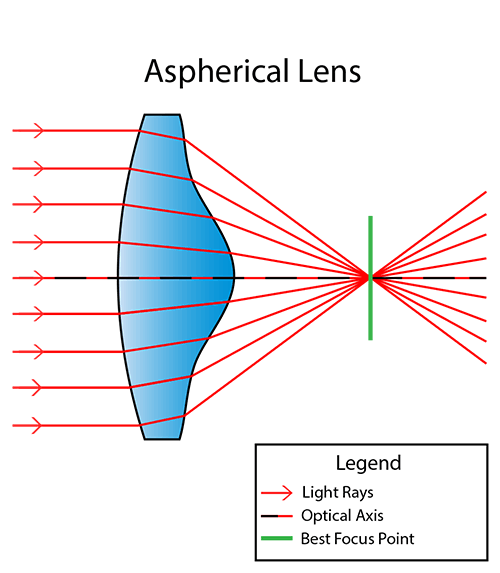Spherical Aberration can affect resolution and clarity, making it hard to obtain sharp images. Here is an illustration that shows Spherical Aberration:

As shown above, light rays refract or change their angle when passing through the lens. The ones closer to the top and the bottom of the illustration end up converging at a shorter distance along the optical axis (black/red dotted line), while the ones closer to the optical axis converge at a longer distance, creating different focal points along the same axis. The point of best focus with the “circle of least confusion” is illustrated as the thick green line. Spherical Aberration is not just caused by lens design, but also by the quality of the lens material. Lenses made of poor quality material and large bubbles can drastically impact light refraction.
A perfect lens would have all light rays converge in a single focal point, as illustrated below:

The best focus point with the circle of least confusion is therefore located right on this focal point. A normal spherical lens design would not allow the above to happen though, so specialized precise methods by manufacturers have been developed over the years to reduce the effect of spherical aberration.
Ways to Reduce Spherical Aberration
Modern lenses employ different techniques to dramatically reduce spherical aberration. One of the methods employs using a specialized apsherical (meaning non-spherical) lens surface, which is curved outwards on one side for the sole purpose of converging light rays into a single focal point, as illustrated below:

Spherical aberration is most pronounced when the diaphragm of the lens is wide open (maximum aperture). Stopping down the lens even by a single stop dramatically reduces spherical aberration, because aperture blades block the outer edges of spherical lenses. A clear example of this can be found in the focus shift article.
If you are interested in reading more, below is the list of articles on other types of aberrations and issues that we have previously published on The Photographers:




